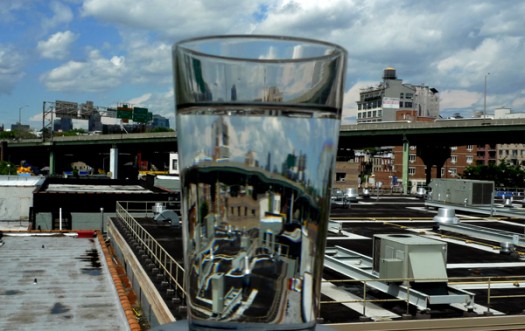
We are celebrating 15 years — and counting — of stories that are deeply researched and deeply felt, that build a historical record of what the city has been.
We are celebrating 15 years — and counting — of stories that are deeply researched and deeply felt, that build a historical record of what the city has been.
WALK THIS WAY
This week, the New York City Department of Transportation released a request for proposals to develop a comprehensive pedestrian “wayfinding system” in four districts: Long Island City, Queens; Prospect Heights/Crown Heights, Brooklyn; and Chinatown and parts of Midtown in Manhattan. The RFP is, in part, a response to the DOT statistic that 9 percent of New Yorkers and 27 percent of visitors admitted to being lost in the past week. The selected system will cater to both locals and visitors, allowing people to better gauge travel time and navigate unfamiliar neighborhoods. “As our streets become safer, more inviting places, it’s even more important that a common language unite these spaces and open them up in new and exciting ways,” said Commissioner Sadik-Khan. See more from the DOT here.
GREEN CITIES
The US and Canada Green City Index report was recently released by the Economist Intelligence Unit (EIU), commissioned by Siemens, ranking NYC as the third greenest city in North America. The survey took into account 31 factors developed by a panel of experts in environmental sustainability, which rated cities on environmental impact in land use, waste, air, transportation and a variety of other environmental categories. New York beat out all other cities in Transport and Land Use (scoring major points for density and public transportation), but was ranked 16 out of 27 on waste management. To read the full report on New York and other cities, see the full report here.
SAFE STREETS
Last month, Mayor Bloomberg revealed new safety measures as part of the DOT’s revamped pedestrian safety plan. Calling for a reduced speed limit of 20 mph in the Claremont neighborhood of the Bronx, this is the first manifestation of the DOT’s plan to introduce new slow speed zones around the city. DOT will also be placing radar-equipped signage throughout the boroughs to notify motorists of their speed and intimidating digital displays of skeletons to discourage dangerous driving. Mayor Bloomberg was joined by DOT Commissioner Janette Sadik-Khan and UN Secretary General Ban Ki-moon (to support the “Decade of Action for Road Safety”) to announce the safety initiative. A report released by Transportation Alternatives states that 39 percent of observed motorists drive in excess of the 30mph limit, vindicating what many bikers and pedestrians know all too well. Secretary General Ki-moon noted that the chance of surviving after being struck by a vehicle traveling at 40mph is only 30 percent, and that nationally road fatalities kill 1.3 million people per year and injure another 20 to 50 million more. Read more on the story in coverage from Streetsblog.

Image via FOP
NYC WATER: GEOLOGIC CITY
Friends of the Pleistocene published a fascinating Geologic City Report on New York City’s relationship with our drinking water, how aquatic architecture shapes dynamic space, and what happens to road salt, waste, and other solvent undesirables once they “disappear.” Even with some of the cleanest and tastiest water in the country, sources of NYC drinking water are still exposed to “microbial contaminants, inorganic contaminants, pesticides and herbicides, organic chemical compounds, and radioactive contaminants.” Thankfully, the city has intricate sanitation and delivery infrastructure in place to safeguard consumption, much of which remains generally unknown to the public. 97 percent of water reaching the city every day is carried solely by gravity via channels, tunnels and pipes. The system itself, which you can read more about in this 2008 story in The New York Times, provides water for 9 million residents through a network of turn-of-the-century reservoirs and aqueducts. City Water Tunnel No. 3 is currently under construction with a completion date slated for 2020 and a budget of $6 billion dollars. The new tunnel will help to ease the demand on the two older tunnels, both of which are in dire need of inspection and repairs. Read the full story at FOP and learn more about their Geologic City Reports in a piece they wrote for Urban Omnibus last year.
EVENTS & TO-DOs:

BEAUX ARTS BALL
Save the Date: The Architectural League of New York’s annual Beaux Arts Ball will be held this year on September 17th, 2011! Stay tuned for more details about this year’s location, the designers who will create the environment for the event and how to buy tickets. In the meantime, take a look at photos from past Beaux Arts Balls over on archleague.org.
FIELD GUIDE TO PHYTOREMEDIATION: NYC-based design project A Field Guide to Phytoremediation has launched a Kickstarter campaign ending July 30th. Kaja Kühl, founder of youarethecity and creator of A Field Guide to Phytoremediation, hopes the guide will reflect her research on vacant lots and provide a methodology for DIY phytoremediation. The funds will directly support a print version of FIELD GUIDE (a DIY guide book for phytoremediation) and help build an on-site installation at La Finca del Sur, a community farm in the Bronx. Find out more about phytoremediation in Kühl’s 2010 Urban Omnibus piece.
ELASTIC CITY TOUR: Elastic City is premiering four new walks with women in July, with Andrea Polli hosting “City Island Hop,” a walk to discover City Island. Although technically part of NYC, City Island remains isolated, sitting just on the border of Nassau County. Incorporating anthropological field study techniques, this walk will use the island as a living laboratory for exploring New York City’s history and future. Participants will be engaged in exercises designed to observe the environment and decipher its visual and aural cues and uncover the relatively unknown wonders of this “island existence.” See here for more on the tours and to read up on Elastic City’s past work, check out our interview with EC founder Todd Shalom and participating artist Neil Freeman.
.
The Roundup keeps you up to date with topics we’ve featured and other things we think are worth knowing about.
The views expressed here are those of the authors only and do not reflect the position of The Architectural League of New York.